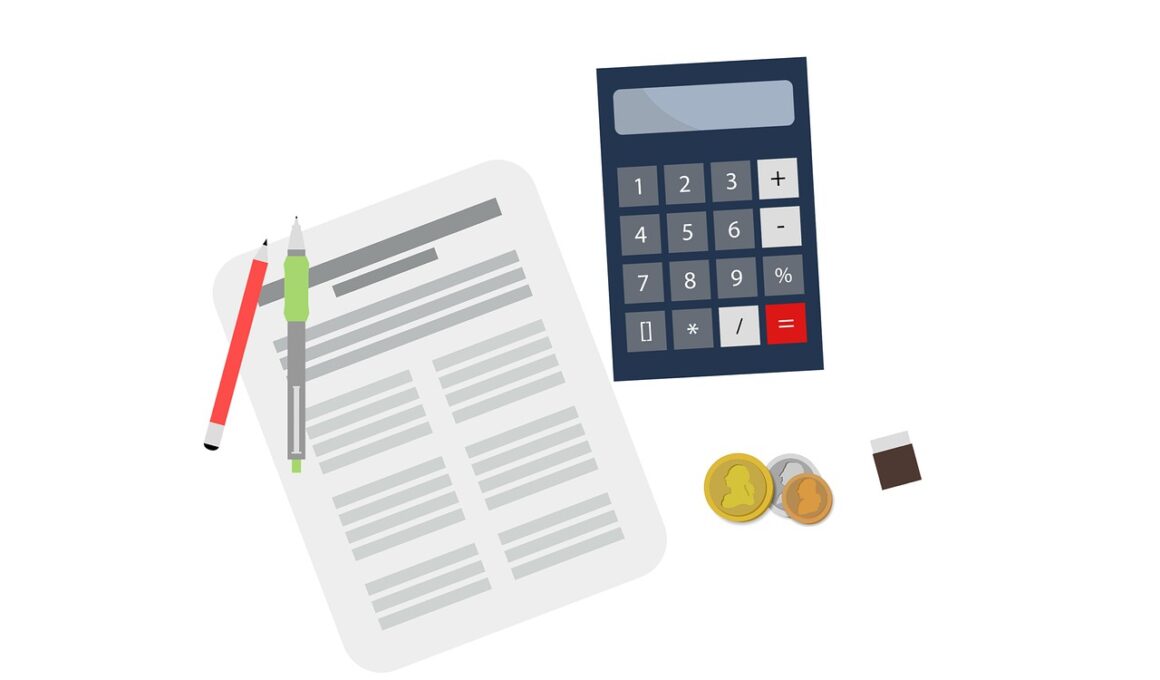Advanced Tools and Software for Cost Analysis
In today’s fast-paced business environment, effective cost analysis is crucial for organizations to maintain profitability. Advanced tools are being developed that enable comprehensive financial analysis while simplifying the data collection process. These platforms employ sophisticated algorithms to analyze trends in spending and forecast future financial performance accurately. When exploring the available software options, organizations should consider user-friendliness, integration capabilities with existing systems, scalability, and data security. Tools such as QuickBooks and Microsoft Excel are commonly used yet increasingly complex analytics software like Tableau and SAP are gaining popularity. By harnessing these technologies, businesses can make data-driven decisions that directly impact their bottom line. Additionally, businesses that invest in these advanced cost analysis tools set themselves apart from competitors by gaining deeper insights into their financial health. This ultimately leads to better resource allocation and improved operational efficiency. Therefore, finding the right software platform is a critical investment that pays substantial dividends by facilitating a more effective understanding of spending habits. Organizations should prioritize learning about these tools and considering how they can be tailored to meet their unique requirements.
Cost analysis is vital for measuring an organization’s overall performance. With advanced computing technologies, businesses can leverage cost analysis software to streamline operations and reduce expenditures significantly. Solutions like Oracle Cost Management provide extensive functionality in handling complex financial datasets. Features include real-time reporting, detailed overhead tracking, and activity-based costing methods. Integrating these features allows businesses to identify hidden costs that can be eliminated or reduced. Moreover, these systems often facilitate collaborative decision-making by enabling various stakeholders to access essential financial data easily. Furthermore, visualization tools are often included, which can help present data in a more user-friendly manner. Utilizing dashboards, charts, and graphs to display insights enhances understanding and speeds up the decision-making process. As a result, organizations can quickly adapt to changes and make informed choices even in uncertain economic conditions. The intelligent use of cost management tools not only improves accuracy but also increases predictability in expenditures. This proactive approach equips leaders with the necessary information to determine actionable plans that can drive the organization forward and ensure sustainable growth.
Benefits of Implementing Advanced Tools
The implementation of advanced cost analysis tools provides substantial benefits that can transform how organizations approach financial management. First and foremost, these tools enhance the accuracy of cost tracking by automating data collection processes. As a result, businesses experience fewer errors associated with manual input while simultaneously saving time. Enhanced accuracy leads to more reliable forecasts and analyses that inform strategic decisions. Additionally, many modern cost analysis platforms offer robust reporting capabilities. Customized reports empower decision-makers to assess performance against established benchmarks efficiently. They can quickly track key performance indicators (KPIs) and discern strategic trends. Furthermore, the integration of artificial intelligence within these tools allows businesses to glean insights from historical data and suggest actionable strategies based on predictive analytics. This capability provides organizations a significant edge over competitors, enabling them to respond faster to emerging market trends. Furthermore, collaborative features integrated into these tools facilitate real-time sharing of information among teams, enhancing communication and productivity. Overall, the strategic implementation of advanced cost analysis solutions fosters a data-driven culture that supports informed decision-making and long-term success.
One of the outstanding aspects of advanced cost analysis tools is their ability to generate actionable insights from vast amounts of data. These tools assist organizations in not merely tracking costs but also understanding the underlying factors that drive those costs. For instance, frameworks that utilize machine learning algorithms analyze spending patterns to highlight anomalies and areas for possible savings. This allows organizations to focus attention on strategic cost management initiatives. Besides, visual representations of data allow various stakeholders to identify trends and present complex data in an accessible format, sparking informed discussion in meetings or strategy sessions. By employing intuitive interfaces, software encourages greater engagement from teams involved in financial planning and control. Furthermore, cloud-based applications provide accessibility across devices, enabling stakeholders to collaborate seamlessly regardless of location. The result is improved decision-making that is timely and responsive to dynamic market environments. As companies increasingly recognize the value of evidence-based management, these insights become invaluable. Leveraging these advanced tools and methodologies enables organizations to refine their strategies and enhance overall cost efficiency.
Challenges of Using Cost Analysis Software
Despite the numerous advantages, organizations must also navigate several challenges when adopting advanced cost analysis tools. One significant hurdle is the initial financial investment required for implementation and ongoing maintenance. Companies must ensure they select the tools that align with their strategic goals while maximizing their return on investment. Furthermore, employee training can be time-consuming and costly. Ensuring that staff understand how to utilize these complex applications effectively is paramount for successful integration. Resistance to change is another common setback faced by organizations transitioning to new systems. Long-standing employees may feel apprehensive about adopting novel technology, which could hinder productivity. Continuous support throughout the transition period is essential to alleviate concerns and foster acceptance among staff members. Moreover, integrating these advanced tools with existing software can be challenging, particularly if legacy systems lack compatibility. This may necessitate significant modifications to current infrastructure, requiring expert assistance. Finally, concerns regarding data security in cloud-based applications must not be overlooked. Therefore, businesses must navigate multiple layers of challenges to ensure their chosen cost analysis tools deliver the intended benefits.
Furthermore, organizations should not overlook the significance of ongoing support and updates when utilizing advanced cost analysis software. Many vendors provide subscriptions that include regular software upgrades and technical assistance. However, organizations need to stay informed about new features and updates to maximize their utilization of these tools. By attending training sessions or webinars, staff can learn about recently released functionalities that enhance analysis techniques. This ongoing education ensures teams use the tools effectively for consistently accurate financial insights. Additionally, maintaining open lines of communication with software vendors allows organizations to share their unique challenges. By doing so, vendors can offer tailored support and suggested best practices based on real-world applications. Integrating feedback with the vendor enhances the overall experience and effectiveness of the software. Furthermore, organizations should continuously evaluate their cost management strategy and the contributions of the software to ensure alignment with evolving business goals. By redefining objectives and methodologies, organizations can adapt to the changing landscape and remain competitive. Ultimately, the commitment to ongoing support and evaluations reinforces the value derived from advanced cost analysis tools.
Future Trends in Cost Analysis Technology
As technology continues to advance at a rapid pace, several future trends are emerging within the realm of cost analysis tools. One significant trend is the integration of artificial intelligence and machine learning into cost analysis software. These technologies can process vast datasets, uncovering patterns that humans may overlook. This development promises to enhance predictive analytics capabilities, giving businesses a more concrete understanding of future market behaviors and spending trends. Additionally, the shift towards cloud computing offers flexibility and scalability that traditional on-premises systems cannot match. Businesses leveraging cloud-based solutions enjoy easy access to their data from anywhere, fostering remote collaboration among teams. Another anticipated trend is increased focus on real-time analytics, as financial managers expect immediate insights rather than waiting for periodic reporting. This shift enables organizations to respond proactively to emerging financial challenges. Furthermore, data visualization tools will continue to evolve, offering more interactive and intuitive interfaces for users. These advancements will enhance comprehension and facilitate quicker decision-making processes. Ultimately, staying ahead of these trends allows organizations to harness technology effectively, ensuring sustainable growth in a competitive landscape.
In conclusion, advanced tools and software for cost analysis play a crucial role in helping organizations navigate their financial landscapes. By investing in sophisticated technologies, businesses can achieve deeper insights into costs, enhance operational efficiency, and make informed strategic decisions. The benefits derived from automating data analysis processes greatly outweigh the challenges of implementation and training. Employees equipped with intuitive tools are better positioned to address financial challenges in real time, thereby fostering a culture of proactive management. As companies strive to remain competitive in their respective industries, the continuous adaptation to technological advancements becomes essential. Organizations must continually evaluate their financial strategies and the tools utilized to achieve their goals. By considering future trends in cost analysis technology, companies can prepare themselves for changes in the marketplace while maximizing the value derived from their investments. This commitment to understanding and utilizing advanced technology will ultimately lead to increased profitability, enabling organizations to thrive in an ever-evolving business environment. Therefore, it is essential for organizations to embrace these tools and continuously enhance their capabilities in cost analysis and management, ensuring success.


